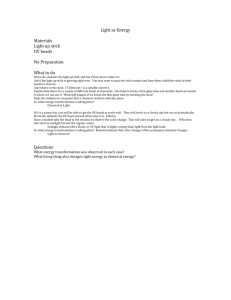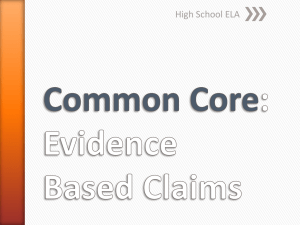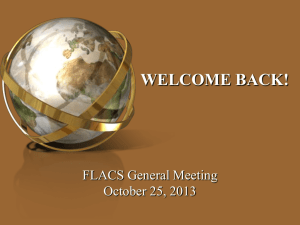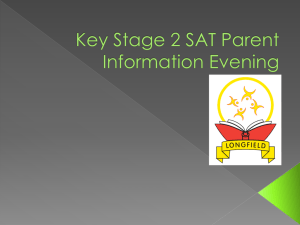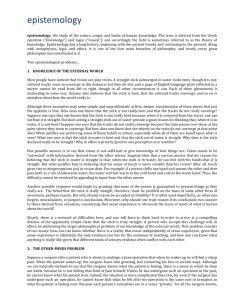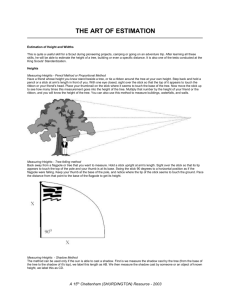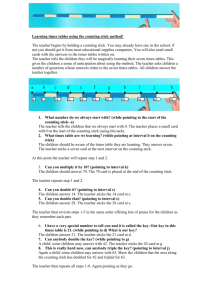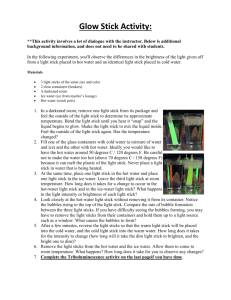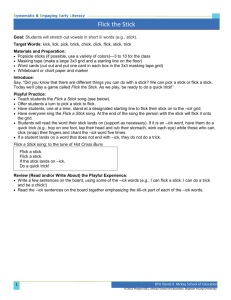Making Science Thinking Visible by Engaging Students in Speaking
advertisement
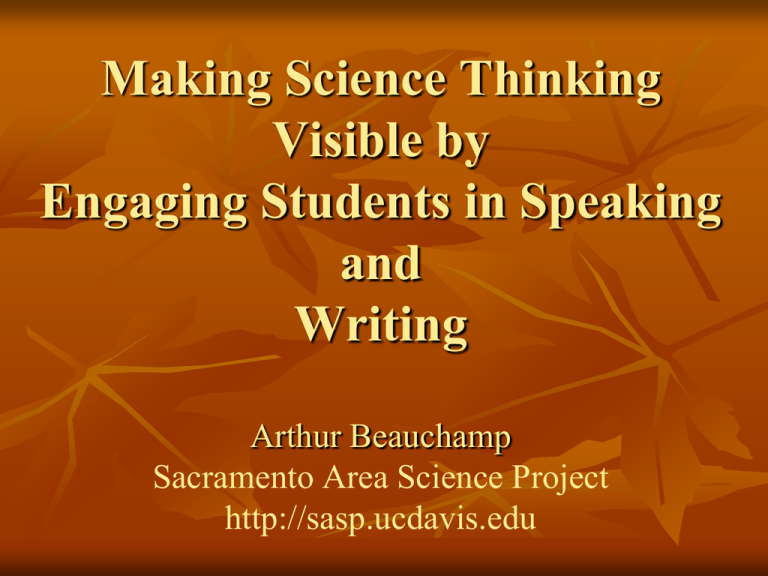
Making Science Thinking Visible by Engaging Students in Speaking and Writing Arthur Beauchamp Sacramento Area Science Project http://sasp.ucdavis.edu Teachers who make use of well crafted writing tasks get students to reveal their thinking about science end up with students who write more, improve their writing and understand more science. Our Journey Today What – Increase our capacity to support teachers in their transition to Common Core and Framework aligned instructional practices. Consider writing in science and methods to get more meaningful writing from students. Why – Common Core and Framework are here, we know much more about teaching and learning, and science education is undergoing change. How – By engaging in content with literacy embedded in it (using literacy to understand science) and reflecting on what Common Core and the Framework asks teachers of science to do. Types of writing called for in CC for Science Write arguments to support claims in an analysis of substantive topics or texts using valid reasoning and relevant and sufficient evidence. Write informative/explanatory texts to examine and convey complex ideas and information clearly and accurately. Characteristics of student writing Produce clear and coherent writing in which the development, organization, and style are appropriate to task, purpose, and audience. Draw evidence from literary or informational texts to support analysis, reflection, and research. Typical Writing Tasks What type of student writing answers are you currently getting in the classroom? Typical Writing Answers Might they look something like this? 1. Acceleration 2. Force 3. Centimeters per second Or like this? 1. The three major types of plate boundaries are convergent, divergent and transform 2. Meiosis is a process of cell division in which the number of chromosomes is cut in half. Or like this? Our hypothesis was wrong. The experiment showed that ice floats higher in salt water. In our lab the ball rolled up then down. The forces made it do this. Typical Writing Tasks • Do more complex organisms always have more chromosomes than simpler organisms? • Why must chromosomes be copied before cells divide? • How is ATP involved in cellular respiration? • Explain why action and reaction forces do not cancel out, even though they have equal magnitudes and act in opposite directions. • Why would you not be able to make jewelry out of sodium? • What four factors affect how much damage is caused by an earthquake? • Why is soil important? A Brilliant New Way to Incorporate Literacy Step 1: On a blank sheet of paper, after SILENTLY analyzing the following data, write down your thinking to the following question: “Which animal has the MOST beneficial adaptations? Step 2: Use the Talking Sticks Protocol to have a group conversation about which animal has the most beneficial adaptation. Step 2: Talking Sticks 1. Each group places their “Talking Stick” in the center of the table. 2. To make a comment you must pick up the “Talking Stick” - then you speak and hold onto the “Talking Stick”. 3. Once you are finished with your comment, set the “Talking Stick” in front of you and you are not allowed to comment again until all the other group members have had a turn (group members may pass their turn with the “Talking Stick”). 4. After everyone in the group has had a chance to comment, repeat the process until time is up. Step 3: Using the articles from the USTA Adaptations lesson plan on Day 3, in your groups, read the articles using the Summary Protocol. Summary Protocol Evolution by Natural Selection 1. In small groups, one person keeps the group on-task. 2. Read one paragraph silently (leader makes sure all group members know where paragraph starts and ends). 3. After everyone in the group has finished reading the paragraph, the group discusses the main idea(s). 4. The group comes to consensus about the main idea(s). 5. The group talks about how to write the main idea(s). 6. Each group member writes down the main idea(s). 7. Repeat for each paragraph of the reading. Processing •If your group finishes before others, take some time to discuss how you might use Summary Protocol in your classrooms. Step 4: Applying the Concept of Adaptation Review the original data on the four animals considering what you have learned from the dialogues you have had and the reading and silently complete the writing prompt on the next slide. Writing Prompt: You are an environmental scientist having to relocate some animals to a desert environment. Write a letter to your coworker explaining which animal will adapt most easily to the new environment. In your letter make sure you support your position with evidence from the data, the text source, and from your own thinking. Teachers who make use of well crafted writing tasks get students to reveal their thinking about science end up with students who write more, improve their writing and understand more science. Applying the Communication Triangle Examples of Writing Prompts •You are a geologist studying rocks to determine the direction of flow of an ancient glacier. What clues might help you determine the glacier’s direction of flow? Put your answer in the form of a “Do-It-Yourself” guide to determining glacial flow direction. •You are an earthquake safety expert and on a radio program. A caller asks the question, “if you are in a car out in the open during an earthquake would you be safest staying in the car?” Write what you would say to the caller. •You are a doctor with a patient who has a condition in which some bad molecules are getting into their cells. Write an email to them that explains how a cell membrane is structured to keep some molecules out and let others in. •Someone has written into a science magazine saying they have discovered a new element and they say it is a new transition metal. You are the science editor and are writing an editorial on the discovery. In your editorial describe the types of properties the new element should have. • Sea World has contacted you because you are a marine biologist. They want you to write the content for a display that will explain the forces that influence whether a dolphin floats or sinks while it is at rest in the ocean.



